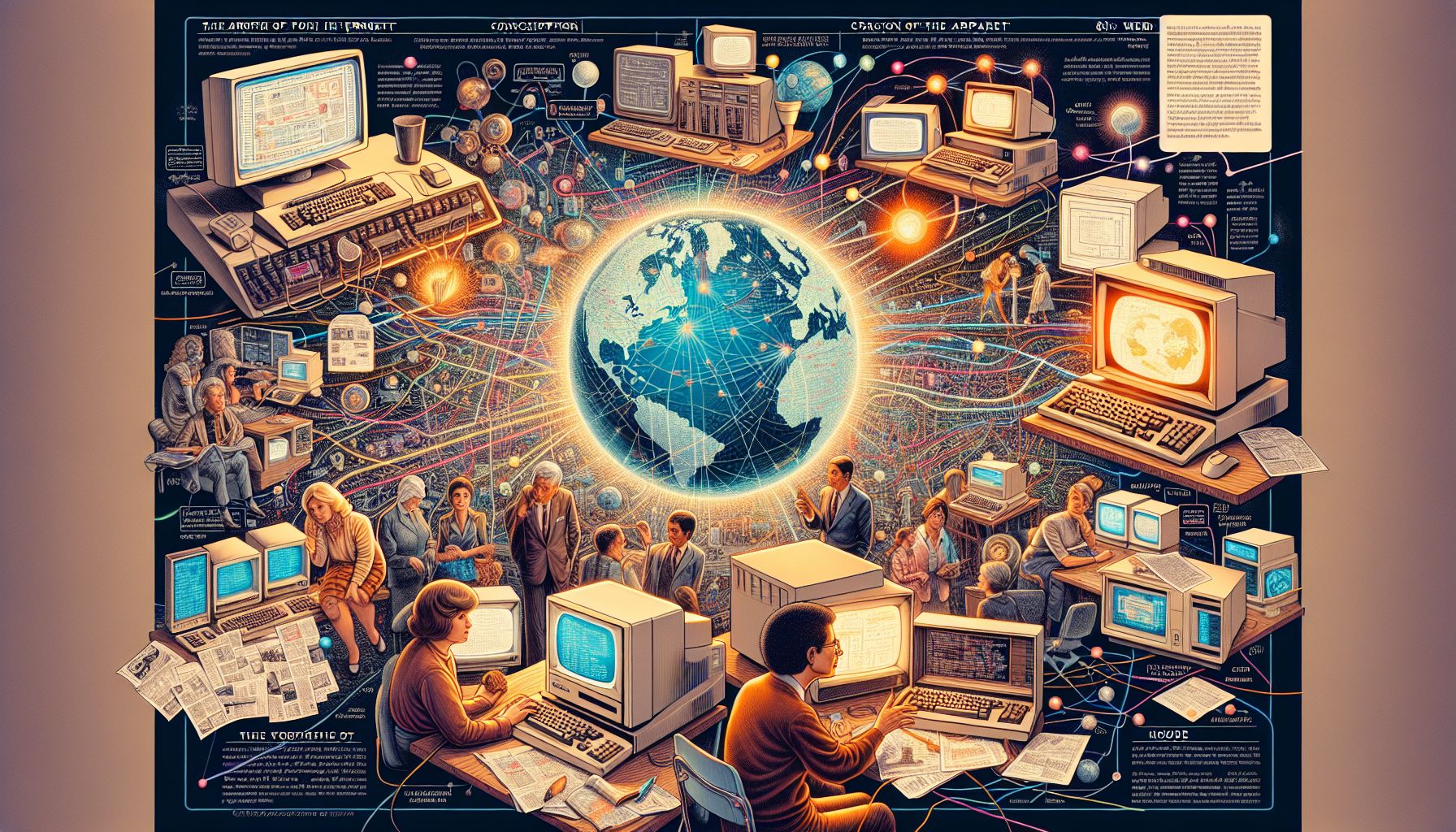📌 Let’s explore the topic in depth and see what insights we can uncover.
⚡ “Believe it or not, there was a time when our world was devoid of viral videos, social media drama, and e-commerce. Dive into the captivating saga of the Internet’s evolution, from its infancy as a military communication project to the life-altering global entity it is today!”
Welcome to our deep dive into the history of the Internet! It’s a fascinating journey from the birth of ARPANET to the global digital village we’ve come to know as the World Wide Web. In today’s world, most of us can’t imagine life without Google, Facebook, or Amazon. But there was a time when the concept of a worldwide network of connected computers was just a far-fetched idea in a few brilliant minds. So, how did we get here? Buckle up, dear reader, as we travel back in time, traversing through the evolution of the Internet, watching as it morphs from a military concept to an indispensable global infrastructure. Let’s uncover the story of the Internet, its origin, its evolution, and how it became the cornerstone of our modern world.
🚀 ARPANET: The Genesis of the Internet

"Charting the Internet's Evolution: Arpanet to WWW"
The story of the Internet begins with ARPANET (Advanced Research Projects Agency Network). Funded by the U.S. Department of Defense in the 1960s, ARPANET was designed to allow computers at leading universities and research institutions to communicate with each other. The idea was to create a network that could withstand any disruption, even a nuclear war! Talk about being future-proof, right? The first message sent over ARPANET was ‘LO’, short for “login”, from UCLA to Stanford Research Institute on October 29, 1969. The system crashed after only two characters, but the revolution had begun. By the end of 1969, four computers were connected to ARPANET.
🌍 Birth of the Internet Protocol Suite: TCP/IP
While ARPANET was a significant step forward, the Internet as we know it began to take shape with the development of Transmission Control Protocol/Internet Protocol (TCP/IP). Developed by Vint Cerf and Robert Kahn in the 1970s, TCP/IP became the standard language for communication over the Internet, enabling computers to communicate regardless of the hardware or software they were using. On January 1, 1983, ARPANET officially switched to TCP/IP, marking the birth of the Internet. This new protocol suite allowed for an explosion in the number of networks, leading to the phrase “network of networks,” which is essentially what the Internet is.
📧 The Dawn of Email and Usenet
As the Internet grew, so did its uses. In 1971, Ray Tomlinson invented email, forever changing the way we communicate. Tomlinson’s invention allowed users to send messages to others on the same network. In 1972, he expanded the program to allow messages to be sent between networks. At the same time, Usenet, a global discussion system, was developed by two Duke University graduate students. Usenet allowed users to post articles or posts (news) which could be read by others. The two systems, email and Usenet, set the foundation for modern Internet communication.
🌐 The Birth of the World Wide Web
As the 80s rolled around, the Internet was mainly used by academics and the military. But that all changed when Tim Berners-Lee, a British physicist, invented the World Wide Web in 1989. Berners-Lee dreamt of a system that used hypertext to allow users to navigate from one piece of content to another. His idea was to create a “web” of information that anyone could browse. Berners-Lee developed the Hypertext Markup Language (HTML), the Hypertext Transfer Protocol (HTTP), and the first web browser called “WorldWideWeb”. His invention democratized the Internet, making it accessible to the public. By the mid-90s, the Internet had exploded into mainstream culture. With the advent of web browsers like Netscape Navigator and Microsoft’s Internet Explorer, the web began to look a lot like it does today.
📊 The Dot-Com Boom and Web 2.0
The late 90s and early 2000s saw an exponential increase in the number of Internet users. This period, known as the dot-com boom, saw the birth of companies like Amazon, eBay, and Google. The Internet was no longer just a network for academia or the military; it had become a commercial space. Post the dot-com crash, the web saw another transformation with the advent of Web 2.0. This new phase of the Internet was characterized by user-generated content, social media, and the use of the web as a platform for collaboration. Sites like Wikipedia, YouTube, Facebook, and Twitter emerged, shaping the web into a more interactive and participatory platform.
🧭 Conclusion
The journey from ARPANET to the World Wide Web has been a wild one, marked by innovation, ambition, and the indomitable human spirit. Today’s Internet is more than just a “network of networks”; it’s a global community, a vast marketplace, and a limitless universe of information. It’s hard to imagine a world without the Internet. From communicating with loved ones across the globe, to shopping from the comfort of our homes, to having the sum of all human knowledge at our fingertips, the Internet has truly revolutionized our world. As we move forward, who knows what the future of the Internet holds? Will we see a completely decentralized web, or maybe a fully immersive virtual reality Internet? Only time will tell. But one thing is for sure, the journey of the 🧠 Think of Internet as a testament to human ingenuity and the power of connection. Here’s to many more years of cat videos, viral tweets, and late-night Wikipedia rabbit holes! 🥂
📡 The future is unfolding — don’t miss what’s next!
